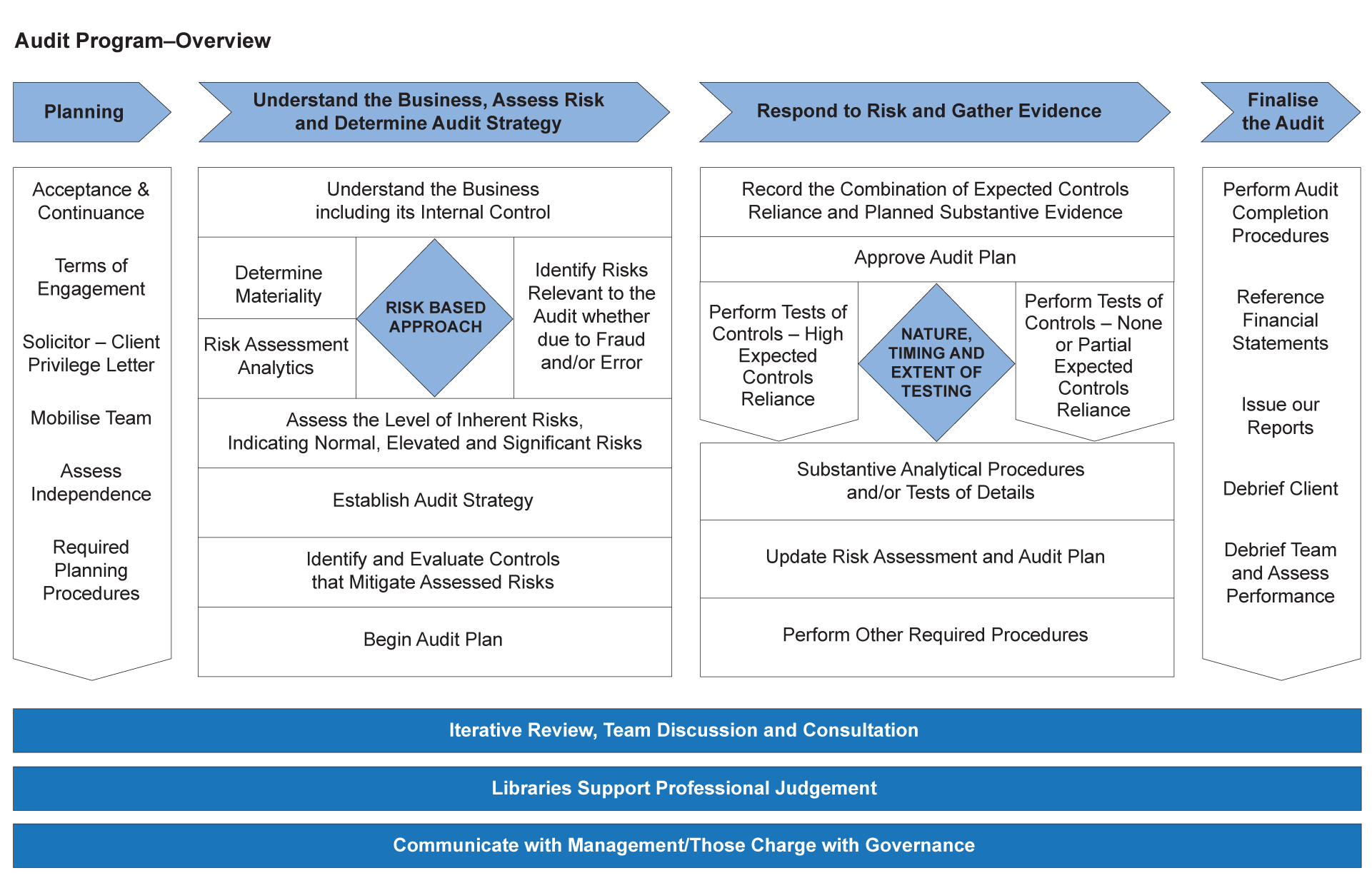Annual Audit Manual
COPYRIGHT NOTICE — This document is intended for internal use. It cannot be distributed to or reproduced by third parties without prior written permission from the Copyright Coordinator for the Office of the Auditor General of Canada. This includes email, fax, mail and hand delivery, or use of any other method of distribution or reproduction. CPA Canada Handbook sections and excerpts are reproduced herein for your non-commercial use with the permission of The Chartered Professional Accountants of Canada (“CPA Canada”). These may not be modified, copied or distributed in any form as this would infringe CPA Canada’s copyright. Reproduced, with permission, from the CPA Canada Handbook, The Chartered Professional Accountants of Canada, Toronto, Canada.
202 Audit Program—Overview
Oct-2012
In This Section
Audit program overview diagram
Overview
This topic explains:
- How the audit program is used to support an effective and efficient audit process
The following Overview diagram is designed to help you understand how the elements of OAG annual audit methodology fit together.
Audit program overview diagram
OAG Guidance
The Overview diagram below provides a high level illustration of the principal elements of the OAG annual audit methodology. The diagram shows our focus on a top-down risk-based approach and gives a high level representation of both the auditor's thought process and its practical application.
